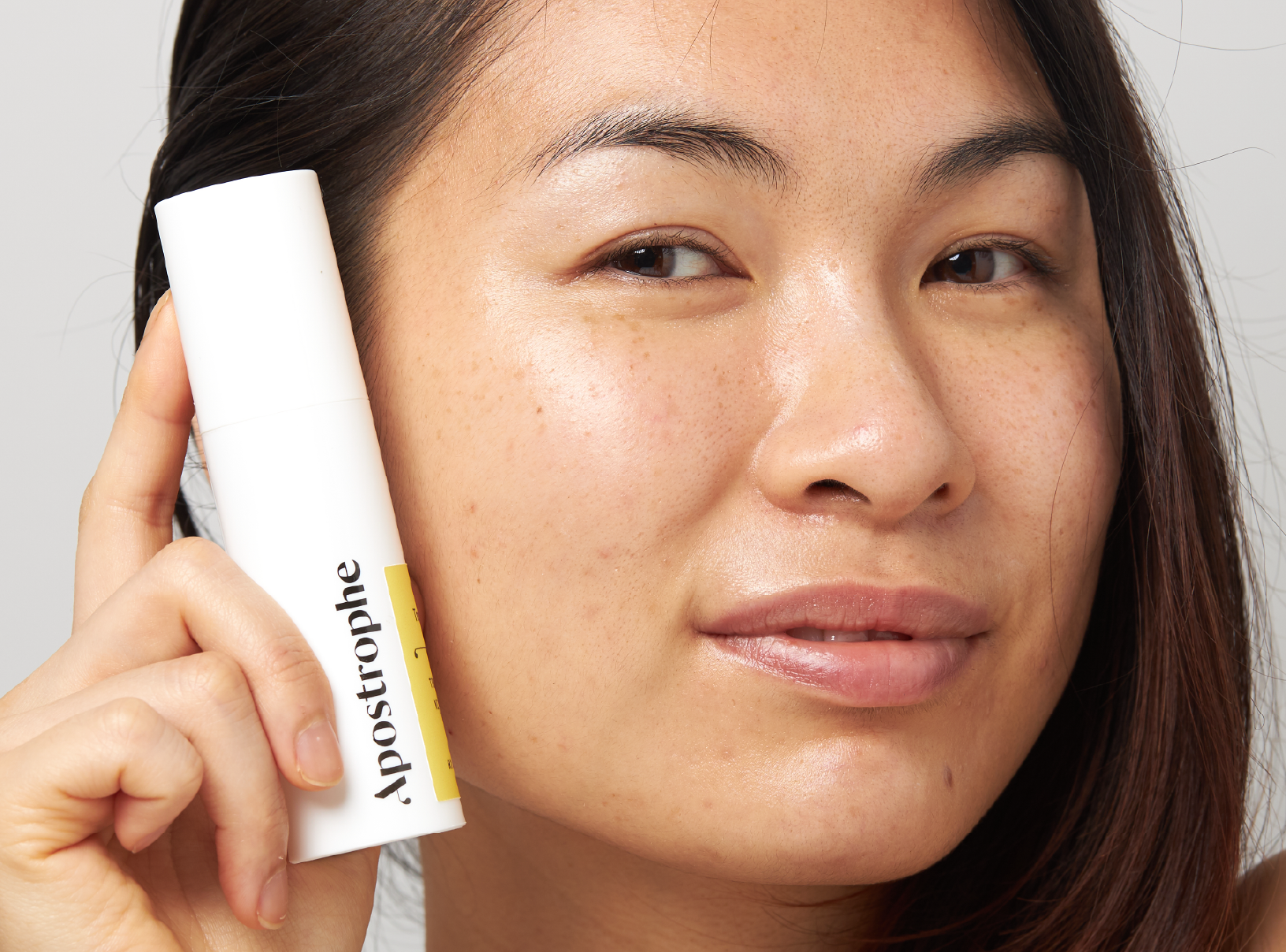Education
Hormonal Cystic Acne
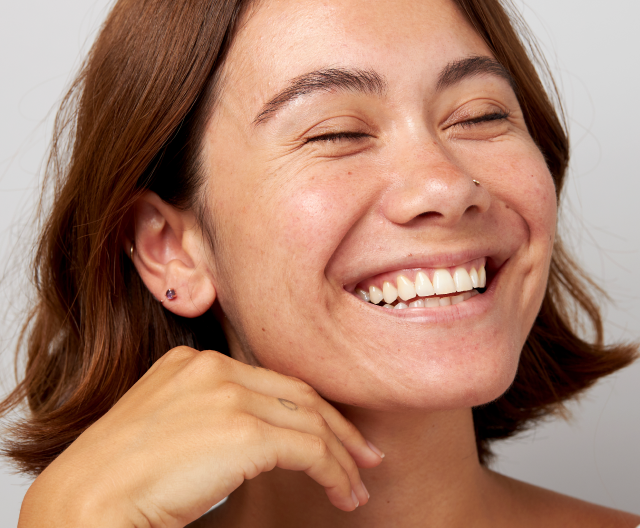
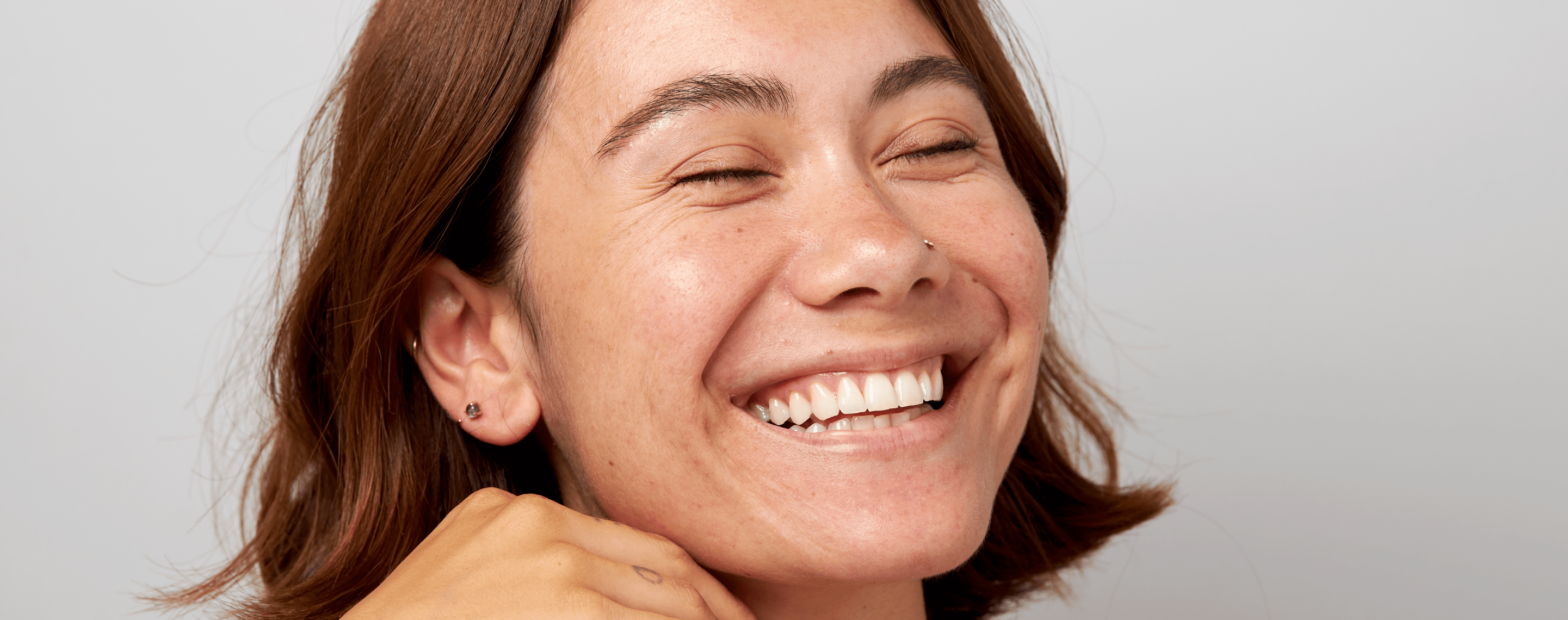
SHARE
Education
Hormonal Cystic Acne
Medically reviewed by Aimee Paik, MD
Written by Apostrophe Team
Last updated 11/3/2024
Hormonal Cystic Acne
It’s noticeable. It’s red. And it hurts! Anyone who has ever woken up with a hormonal acne breakout, commonly referred to as a “cystic pimple”, on their face knows the misery of this particular form of acne. It’s not just painful; it’s also persistent.
When one of these cysts makes an appearance on your face, it can last for weeks, and once it finally disappears, you’re left with an unpleasant scar to remember it by.
Believe it or not, hormonal acne doesn’t need to last forever. Our skincare experts have compiled a complete guide to hormonal cystic acne so that you can finally stop worrying about how to get rid of hormonal acne.
What Does It Mean to Have Hormonal Acne?
Acne is a common inflammatory skin condition—so common, in fact, that many of us have woken up the day before a big date, presentation, or vacation to find a red, angry spot on our face. Talk about a buzz kill.
But what really causes acne? According to The Lancet, the world’s oldest medical journal, there are four leading causes:
Androgen-induced increased sebum production
Altered keratinization
Bacterial colonization by Cutibacterium acnes
Inflammation
To understand these causes, let’s pause for a quick vocab lesson:
Androgen – An androgen is a male sex hormone, like testosterone, found in both men and women to varying degrees. Androgen hormones develop and maintain masculine characteristics. Androgens are also the most important hormone in regulating sebum (oil) production in both sexes which is why excess androgens can lead to acne.
Keratinization – Keratinocyte skin cells migrate to the surface of the skin over time and shed. In altered keratinization, an excess of keratin proteins develops. These dead skin cells clog your pores. Excess androgens can exacerbate this process.
Cutibacterium acnes – C. acnes is one of the dominant bacterias within the microbiota of healthy human skin. It is also the only bacteria within the sebaceous (oil) follicles on the face. Starting in puberty, however, it can trigger inflammatory responses in your skin that cause acne.
Basically, your precious pores clog with oil (sebum) and dead skin cells, often through no fault of your own, and you find yourself with unwanted blemishes on your face and even body.
In fact, we can break acne into two categories with multiple subtypes:
Non-inflammatory Acne – Open and closed comedones, aka blackheads and whiteheads, are plugged follicles. While you may not love their appearance, they’re unlikely to be red or painful.
Inflammatory Acne – Papules, pustules, cysts, and nodules all fall into this category.
If you’re still reading, you’re likely suffering from hormonal cystic acne. Our condolences; we’ve been there.
Causes of Hormonal Acne
As the name suggests, hormonal acne is caused by hormonal fluctuations.
While anyone can have hormonal acne, the American Academy of Dermatology shares that women are more likely to experience adult acne. Why? Women’s hormones fluctuate, and those hormonal imbalances can cause acne. Some common causes of changing hormone levels include:
The menstrual cycle
Pregnancy
Perimenopause
Menopause
Starting/stopping birth control pills
Women can also suffer from endocrine diseases that result in acne from hormonal imbalances, such as polycystic ovarian syndrome (PCOS). A key feature of PCOS is hyperandrogenism, or an excess of androgen hormones, which can cause a wide range of symptoms throughout the body, including acne.
What Are The Characteristics of Hormonal Acne?
Hormonal acne can appear anywhere and can look like regular acne, but there are three main characteristics that set it apart:
Location – Finding hormonal cystic acne on the chin and along your jawline is common. Wherever your acne appears, it is likely to reappear again. Hormonal acne can occur anywhere on your face however.
Type – Hormonal acne typically presents as inflammatory lesions - papules, pustules, nodules and cysts. As we’ve covered, these lesions are tender and painful to the touch.
Timing – Hormonal acne usually appears right before or around your period.
Does Hormonal Cystic Acne Go Away?
If you’re suffering from unpleasant zits, you’ve got one question on your mind—does hormonal cystic acne go away, or will you be stuck with these cysts forever?
As we’ve learned, hormonal acne is generally cyclical, as it relates to the rise and fall of certain hormones during a menstrual cycle.
Hormonal cystic acne can clear up in a few weeks, but it can also get worse if you...
Mishandle it (i.e., trying to pop it)
Improperly treat it
Experience significant stress
Leave it untreated
So, is there a permanent cure? Hormonal acne can be kept under control, but it requires proper treatment.
Thankfully, you have options.
Traditional Treatments for Hormonal Acne
We can break the traditional hormonal cystic acne treatment into four groups. These groups can be mixed and matched for your best chance to defeat your cysts.
#1 Hormonal Treatments
As you may recall, hormones such as androgens regulate oil production, but because there can be too much of a good thing, excess androgens (hyperandrogenism) can cause hormonal acne. It makes sense, then, that our first line of defense against cystic acne is hormonal treatment.
We have two primary contenders.
Oral Contraceptives
Oral contraceptive (birth control) pills that include estrogen and progestin are an FDA-approved treatment for acne in both adolescent and adult women. In particular, the FDA has approved the following types of oral contraceptive pills:
Ethinyl estradiol-drospirenone
Ethinyl estradiol-norgestimate
Ethinyl estradiol-norethindrone acetate
The birth control patch (Ethinyl estradiol plus norelgestromin) has also been found to be an effective treatment for women with acne.
Androgen Blockers
Spironolactone is an anti-androgen medication that decreases acne-causing hormones as well as the size and activity of oil glands. It is an effective treatment for hormonal acne in women.
Spironolactone comes in two forms:
Oral (i.e., a pill)
Topical (i.e., a gel or lotion)
While only women can take oral spironolactone for acne, people of all genders can use topical spironolactone.
#2 Antibiotics Treatments
Systemic oral antibiotics are another effective treatment for both moderate to severe acne as well as inflammatory acne that is resistant to topical treatments. Still, antibiotics will often be prescribed in combination with a topical therapy such as:
Benzoyl peroxide
Topical antibiotics
Topical retinoids
The two most common types of antibiotics used to treat acne are:
Tetracyclines – The tetracycline family includes doxycycline, minocycline, and tetracycline.
Macrolides – The most common macrolide antibiotic used to treat acne is erythromycin. Azithromycin is also sometimes used.
Occasionally, other antibiotics will be prescribed, such as:
Trimethoprim with or without sulfamethoxazole
Penicillins like amoxicillin
Cephalosporins like cephalexin
#3 The Right Skincare Routine
A good and consistent skincare routine is a must to treat acne and ensure your skin's health and longevity. There are endless skin routines and trends, so stick with these three tried and true principles:
1. Cleansing – Look for gentle cleansers with a pH similar to the skin (5.5). Avoid washing your face too often because it can dry out and irritate your skin. Instead, cleanse twice a day—in the morning and before bed.
2. Topical Treatment – Use an appropriate topical treatment to address your cystic acne.
3. Moisturizer – Look for moisturizers with ingredients like hyaluronic acid or glycerin to keep your skin well hydrated
4. Sunscreen – Wear a broad-spectrum SPF 30+ to protect your skin from UV rays and resulting hyperpigmentation and sun damage.
Acne is nothing to be ashamed of, but many people prefer to use makeup to cover blemishes. Greasy skincare and makeup products can block pores and cause more acne, so be mindful about what types of makeup you purchase and use, especially when it comes to concealers and foundations.
Choosing Your Topical Treatment
Both spironolactone and antibiotics are available in topical forms, but there are several other common topical treatments:
Retinoids – Retinoids are a derivative of vitamin A that accelerate cell growth and turnover. Retinoids used to treat acne include tretinoin, adapalene, and tazarotene.
Salicylic Acid – Salicylic acid is a beta hydroxy acid that promotes natural exfoliation.
Benzoyl Peroxide – Benzoyl peroxide is an acid in the peroxide family that treats acne by removing dead skin cells that clog pores. It is also antibacterial, so it can reduce acne-causing bacteria like C. acnes.
Azelaic Acid – Azelaic acid effectively treats acne such as cysts, although how is unclear. Azelaic acid is naturally antibacterial and anti-inflammatory, making it a beneficial ingredient when fighting against acne.
Dapsone – Dapsone is a topical antibiotic with antibacterial and anti-inflammatory abilities to treat acne.
#4 Visit a Dermatologist
Not sure which cystic acne treatment is right for you? A trip to the dermatologist is one way to access more effective treatments.
Don’t feel like making the journey? Access expert dermatological care and the best prescription online acne treatment with Apostrophe.
How to Treat Hormonal Acne Naturally
Many people try to treat their hormonal acne “naturally” at first, either because of a fear of potential side effects with prescription treatments or a misunderstanding of these treatments.
Some claim that green tea is a natural treatment for acne. Certain compounds in green tea may treat acne because they have antiseptic and anti-inflammatory effects. In a six-week study with 20 patients suffering from mild to moderate acne, a lotion made from 2% green tea showed favorable results.
You can find similar studies for a wide variety of medicinal plants and herbs; however, these studies are all small-scale and limited in their scope.
Overall, there is very limited clinical evidence concerning the effectiveness and safety of so-called natural acne treatments. As a result, prescription oral and topical medications remain the first choice for medical professionals.
Does Diet Have an Effect on Hormonal Acne?
Many people anecdotally notice a correlation between their diet and their acne, but what does the science say?
It’s important to note that the connection between diet and acne is controversial and often contradictory, so if your favorite food is a supposed cause of acne, you may want to consider it a potential culprit. As always, it’s best to consult a dermatology provider either in person or online with Apostrophe.
Foods that have been linked to acne in certain studies include:
Saturated fats
Dairy products
Protein supplements
High glycemic index foods
High glycemic index foods include items like baked potatoes, candy, french fries, and high sugar drinks. These high glycemic foods cause your blood sugar to spike, releasing insulin which causes excess androgen and sebum production.
Say Goodbye to Hormonal Cystic Acne
We know—that’s a lot of technical information! So whether you’re an aspiring skin expert or someone looking for the best treatment plan, even the tiniest pimple can be a complex dilemma. Hormonal acne is a whole other beast because these painful cysts are the result of internal hormonal fluctuations.
If you’ve tried every over-the-counter product and skin routine to no avail, it’s time to call a professional to help you on your skin journey. Apostrophe connects you online with an expert dermatology team, and if prescribed, within 48 hours you’ll receive a custom acne treatment plan so you can get started on your journey to healthy skin.
Shop this post
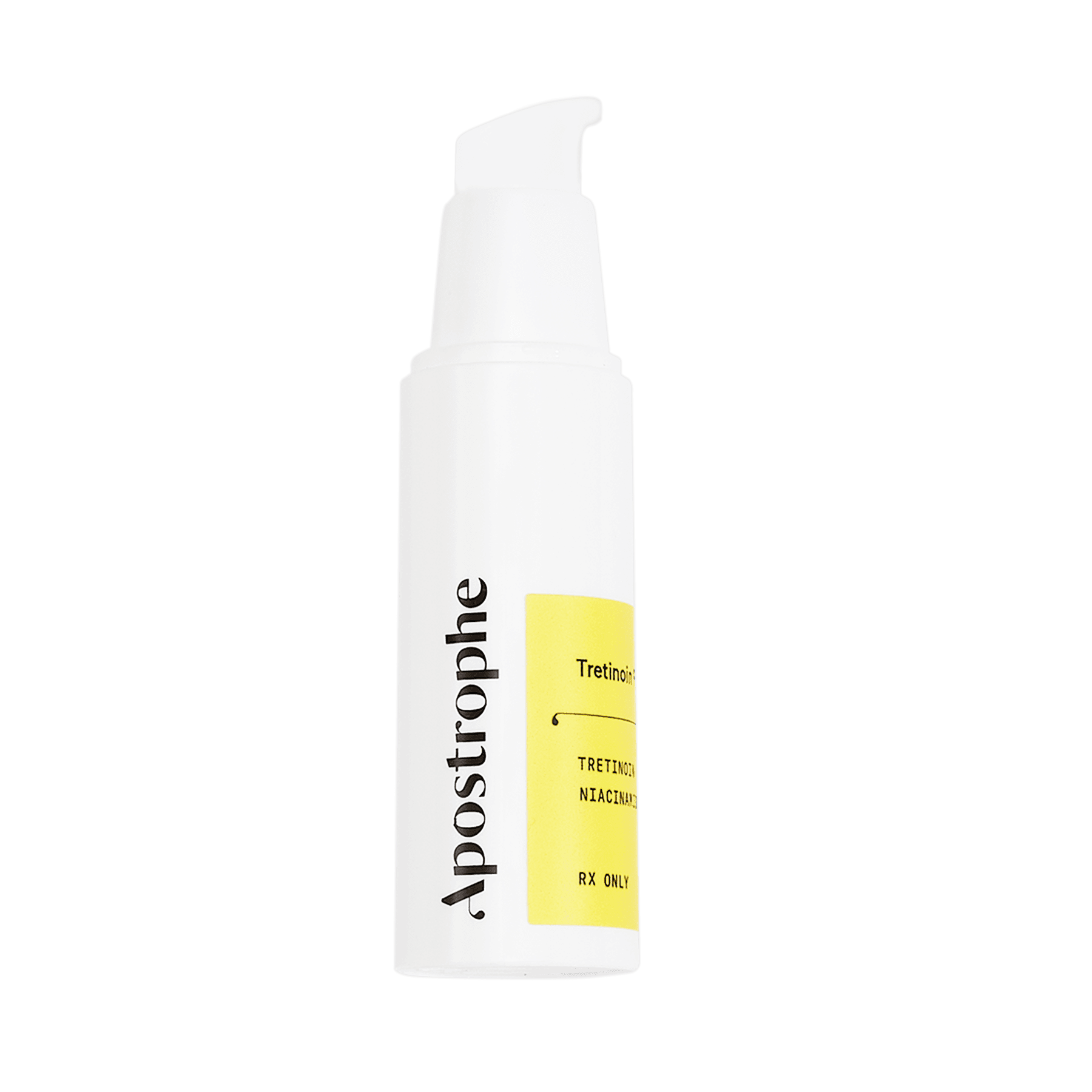
Finacea (azelaic acid)
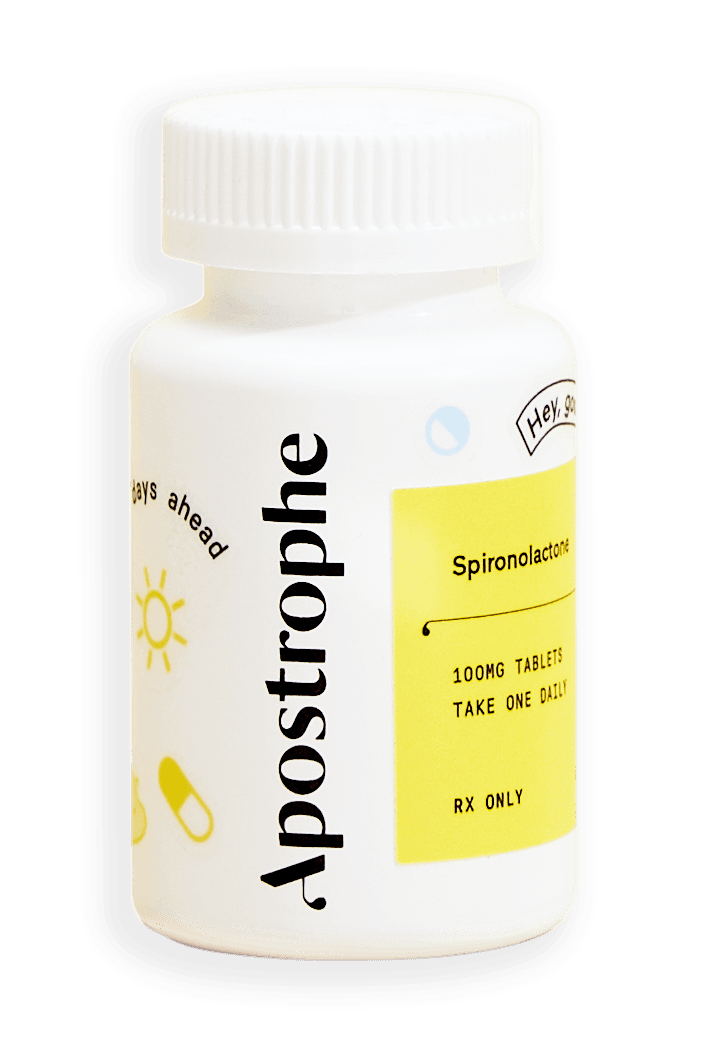
Oral doxycycline

Oral minocycline

Oral Spironolactone

Topical Spironolactone

Tretinoin
Like what you just read? Sign up for our email list to get the scoop on skincare science delivered straight to your inbox.

Deep Dives
A dermatologist shares his thoughts on the recent studies about benzoyl peroxide and benzene.
Read More
Education
What is milia?
What is milia? Today, we’re jumping into one type of bump that you may have heard about most commonly in infants — milia.
Read More
Education
Best moisturizer for acne-prone skin
If you have combination acne-prone skin, figuring out which moisturizer is best for your skin might be tough. In this guide, we break down the best moisturizer for combination, acne-prone skin.
Read More
